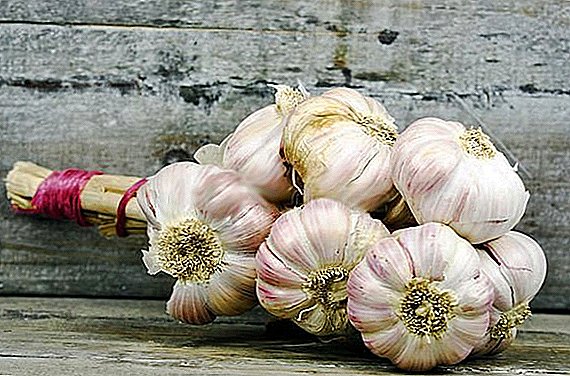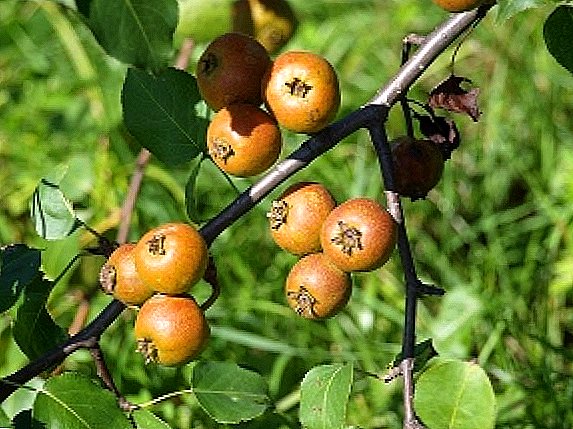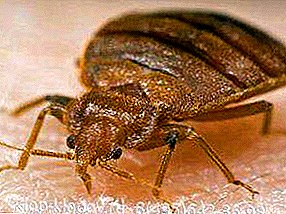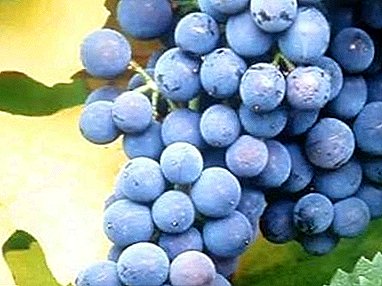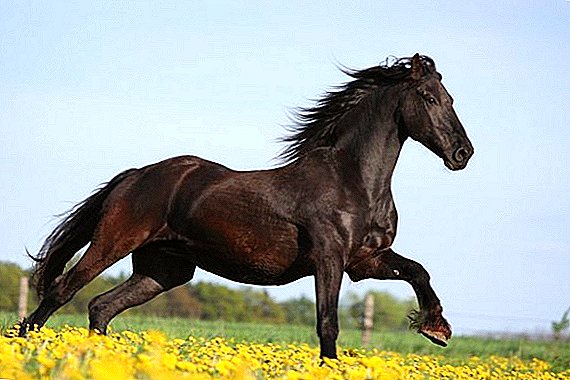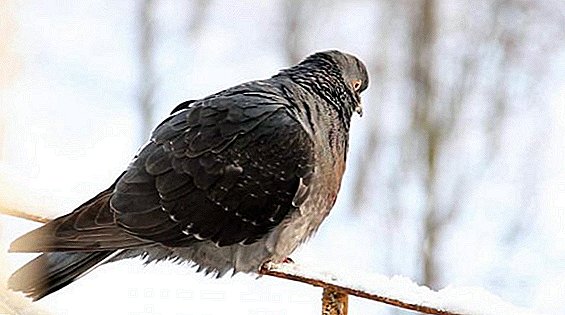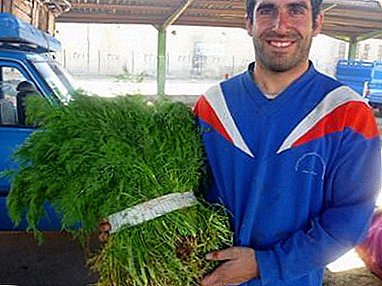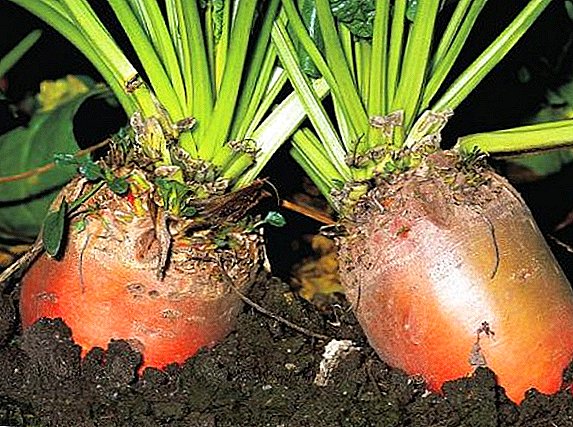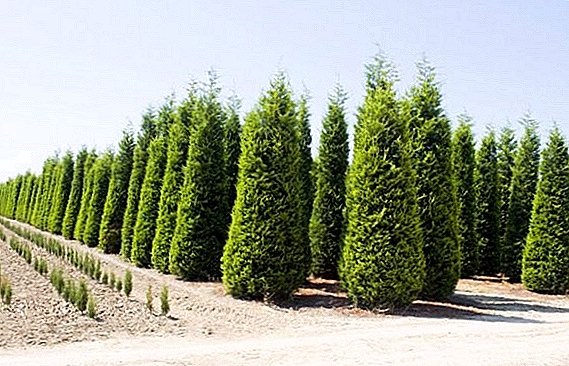 Kupressciparis for most Ukrainian gardeners today are associated with an unknown overseas curiosity of the coniferous family. Despite its increased decorativeness, the plant is not common, it can only be found in the gardens of ardent collectors and in advanced greenhouses. But every lover of gardening, seeing this evergreen beautiful tree, wants to settle it on his site. What is kupressoparis and what varieties prefer for a temperate climate - we will tell about it in this article.
Kupressciparis for most Ukrainian gardeners today are associated with an unknown overseas curiosity of the coniferous family. Despite its increased decorativeness, the plant is not common, it can only be found in the gardens of ardent collectors and in advanced greenhouses. But every lover of gardening, seeing this evergreen beautiful tree, wants to settle it on his site. What is kupressoparis and what varieties prefer for a temperate climate - we will tell about it in this article.
Did you know? Externally kupressoparis very much like cypress. And it’s not for nothing: English breeders got this variety of conifers by chance when they crossed large-fruited cypress and Nutskana cypress.
Kupresstsiparis: what is this plant
Kupressciparis is a fast-growing tree with a cone-shaped crown, which by the age of ten develops up to 6-10 m in height and up to 2 m in width. This nuance should be taken into account by owners of small areas, otherwise you will have to master the technique of bonsai. The maximum length of the trunk is about 20 m. The branches grow intensively, adding each year to 70-100 cm. The needles are scaly, flattened. The cones are small.
The hybrid is cultivated in the UK and is mainly used as a hedge. The British during the spring-autumn tree is cut three times, giving it the necessary shape. Kupresstsiparis well going through a haircut, but its juice in contact with the skin causes severe irritation.
The Ukrainian leyland cupressciparis is more adapted to Ukrainian latitudes.. This species is represented by many varieties. The tree can adapt to any soil, it develops intensively even in poor acidic and alkaline substrates. It is resistant to winds, drought and frost. Loves the light, can bear the shadow. The needles under direct sunshine does not fade, keeping juicy saturated color.  In landscape design, culture will successfully decorate bosquets, serve as a hedge or a shield from the winds for more delicate plants. When planting, it is worth considering the intensity of growth of the branches and rooting seedlings at a distance of 60-80 cm from each other. In the care is not demanding. To support the decorativeness of the plant, 2 kg of organic fertilizers are enough when planted and 50 g of complex mineral substances in the spring. It is also desirable to water coniferous during a long drought. Culture is very resistant to pests and diseases. Propagated by grafting.
In landscape design, culture will successfully decorate bosquets, serve as a hedge or a shield from the winds for more delicate plants. When planting, it is worth considering the intensity of growth of the branches and rooting seedlings at a distance of 60-80 cm from each other. In the care is not demanding. To support the decorativeness of the plant, 2 kg of organic fertilizers are enough when planted and 50 g of complex mineral substances in the spring. It is also desirable to water coniferous during a long drought. Culture is very resistant to pests and diseases. Propagated by grafting.
Important! Formative and sanitary haircut kupressociparisam better start in late August.
Kupressotsiparis "Castevellan Gold"
This variety of cupressoparis is often called the Leyland cypress. It was produced over 50 years ago by breeders in Northern Ireland. The peculiarity of the breed is the pyramidal crown, yellow ovoid male fruits and brown rounded female. In the area, the tree grows up to a height of 35 meters, and in culture it barely reaches 5 m. A characteristic feature of the variety is light green leaves, yellowing in autumn and preserving amber shades before the onset of spring. 
Kupressociparis "Robinsons Gold"
"Robinson's gold" is the most common clone of the Leyland cupressciparis. The branches of this evergreen tree thrive, forming a wide pin-like shape. The trunk grows in height to 10 m. Scale leaves, grow in one plane. The young needles beckons with an unusual copper-yellow shimmer, and to the extent of ripening it becomes yellow-golden.
Important! Kupressciparis shade-tolerant and not picky about growing conditions. However, it develops better and actively bears fruit in fresh, moderately moist, mineral-rich soils.
Kupressociparis "Leighton Green"
Kupressciparis Leylanda "Leighton Green" refers to very hardy plants that are planted to protect the compound from strong winds and windbreaks. In native England, the culture is enclosing farms. Allows a variety of climate and soil. Differs in the increased frost resistance. It is because of this quality that the inhabitants of the northern regions prefer the variety. Externally, this tall slender tree with dark green needles. Has the potential to develop up to 10 m in height. 
Kupressociparis "Green Spayer"
Outwardly, this tree has a weak columnar crown. Differs in a light coloring of needles of yellow tones and asymmetrical arrangement of branches.
Did you know? Kupressotsiparisy develop twice as intensively than Tui. But in comparison with them lose the openwork crown.
Kupressociparis "Variegata"
 Kupressoparis Leylanda "Varegata" is in special demand because it refers to medium tall trees with a compact narrow conical or columnar crown.
Kupressoparis Leylanda "Varegata" is in special demand because it refers to medium tall trees with a compact narrow conical or columnar crown.
The branches are added annually about 40 cm long. The leaves are scaly, flattened, dark green in color with cream and yellowish feathers.
Fruits are small, no more than a pea.
Kupressotsiparis "Blue Jeans"
According to experts, the Leyland cupressoparis “Blue Jeans” is more suitable than other varieties. the formation of a hedge in the Ukrainian neighborhood. Moreover, it is common for a tree not to fade in the sun and not to go bald in the shade. In an adult plant, the trunk reaches 10-15 m, and the diameter of the crown is about 3-5 m. The annual growth of branches is on average 20-30 cm. The leaves are dark green. 
Kupressociparis "Gold Rider"
This evergreen hybrid is distinguished by a symmetrical kolonovidnoy crown. The height of mature representatives of the Leyland kupressoptsarisa "Gold Ryder" reaches 11 m, and width - 5 m. Young seedlings develop very intensively up to 10 years of age. By this time, their trunk is pulled up to 3 m and suspends the activity of its growth.  Fruits of a roundish form, up to 1 cm in size. Leaves scaly, dense, golden shade. The color is green with bronze and yellow castings. Branches develop in a horizontal direction. Kupressociparis Leylanda "Gold Reader" is very decorative, but does not live for more than 60 years.
Fruits of a roundish form, up to 1 cm in size. Leaves scaly, dense, golden shade. The color is green with bronze and yellow castings. Branches develop in a horizontal direction. Kupressociparis Leylanda "Gold Reader" is very decorative, but does not live for more than 60 years.



